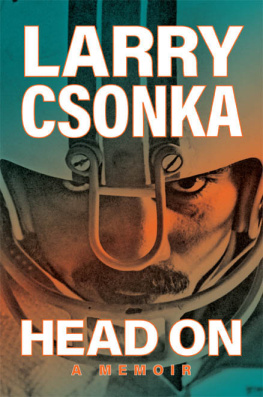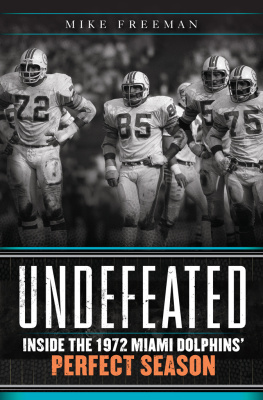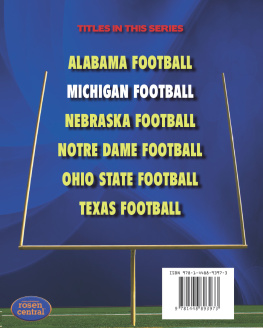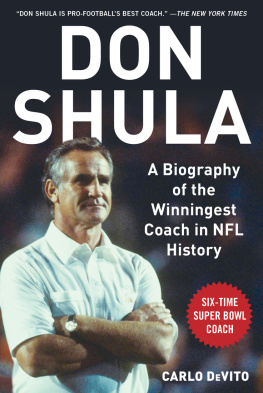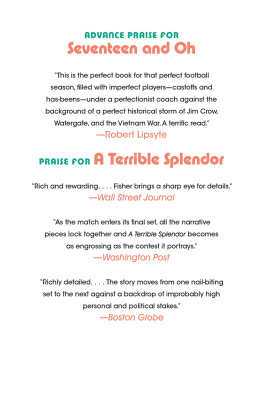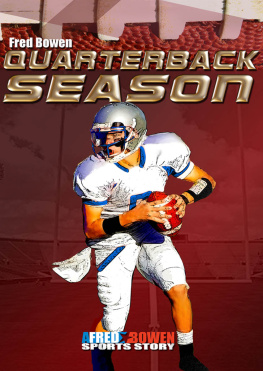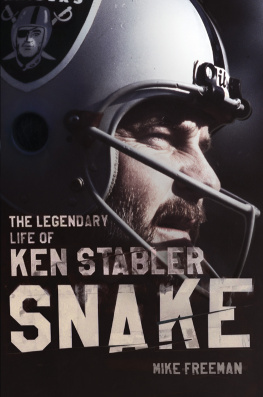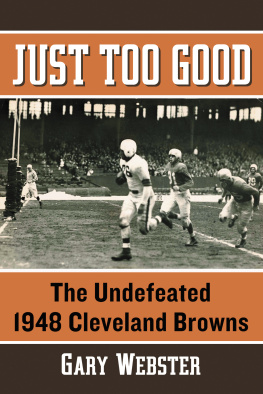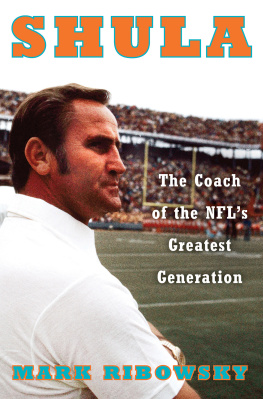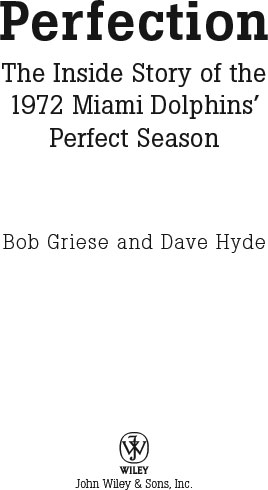Copyright 2012 by Bob Griese and Dave Hyde. All rights reserved
Photo credits: all images courtesy of the Miami Dolphins
Cover image: Neil Leifer Collection/Getty Images
Cover design: Jose Alamaguer
Published by John Wiley & Sons, Inc., Hoboken, New Jersey
Published simultaneously in Canada
No part of this publication may be reproduced, stored in a retrieval system, or transmitted in any form or by any means, electronic, mechanical, photocopying, recording, scanning, or otherwise, except as permitted under Section 107 or 108 of the 1976 United States Copyright Act, without either the prior written permission of the Publisher, or authorization through payment of the appropriate per-copy fee to the Copyright Clearance Center, 222 Rosewood Drive, Danvers, MA 01923, (978) 750-8400, fax (978) 646-8600, or on the web at www.copyright.com . Requests to the Publisher for permission should be addressed to the Permissions Department, John Wiley & Sons, Inc., 111 River Street, Hoboken, NJ 07030, (201) 748-6011, fax (201) 748-6008, or online at http://www.wiley.com/go/permissions .
Limit of Liability/Disclaimer of Warranty: While the publisher and the author have used their best efforts in preparing this book, they make no representations or warranties with respect to the accuracy or completeness of the contents of this book and specifically disclaim any implied warranties of merchantability or fitness for a particular purpose. No warranty may be created or extended by sales representatives or written sales materials. The advice and strategies contained herein may not be suitable for your situation. You should consult with a professional where appropriate. Neither the publisher nor the author shall be liable for any loss of profit or any other commercial damages, including but not limited to special, incidental, consequential, or other damages.
For general information about our other products and services, please contact our Customer Care Department within the United States at (800) 762-2974, outside the United States at (317) 572-3993 or fax (317) 572-4002.
Wiley also publishes its books in a variety of electronic formats and by print-on-demand. Some content that appears in standard print versions of this book may not be available in other formats. For more information about Wiley products, visit us at www.wiley.com.
Library of Congress Cataloging-in-Publication Data
Griese, Bob.
Perfection : the inside story of the 1972 Miami Dolphins perfect season / by
Bob Griese & Dave Hyde.
pages cm
Includes bibliographical references and index.
ISBN 978-1-118-21809-9 (hardback); ISBN 978-1-118-28689-0 (ebk);
ISBN 978-1-118-28237-3 (ebk); ISBN 978-1-118-28396-7 (ebk)
1. Miami Dolphins (Football team) I. Hyde, Dave, 1961 II. Title.
GV956.M47G75 2012
796.3326409759381dc23
To Coach Shula and all those Dolphins fans who keep the spirit of 72 alive
Prologue
Lets start with a story. A small story. One thats true and timely and that translates what it was like to be quarterback for the Miami Dolphins on the magic carpet ride of 1972.
It starts in my realty office that off-season. The phone rang. An actress wanted to sell her home, and she asked me to be the listing agent. I was delighted. Listings are the lifeblood of any Realtor, after all, and this sounded like a good one. That meant business for me in an era when most players conducted some form of business in the off-season. We didnt work out every day like todays athletes do. We just worked. Regular jobs. Regular hours. Just like the regular people we were.
Jim Langer, our Hall of Fame center, was a bank teller. Manny Fernandez, the anchor of our defensive line, earned five dollars an hour as a carpenter on construction sites. Larry Little, our Hall of Fame guard, was a substitute teacher, regularly breaking up racial fights in high school hallways during these turbulent times.
You see, lottery money wasnt part of our athletic dream in those days. Nick Buoniconti, our Hall of Fame linebacker, began playing professional football with the modest dream of making enough money to drive a new Buick and to pay off his $20,000 home mortgage. By 1972 he surpassed those dreams, in part because he pushed himself through law school while playing in Boston. He joined a law firm in Miami.
Football, we knew, took you only so far. Half the players on our undefeated team earned $20,000 or less playing pro football. Their earnings were more than doubled by the $25,000 they won in that years postseason. Dick Anderson, our great safety, tells how he made more money ($120,000) on the Celebrity Golf Tour in 1994 than in his first five seasons combined with the Dolphins ($109,500). And it wasnt just the players who appreciated that additional postseason money. Howard Schnellenberger, our offensive coordinator, took that money and got himself out of debt for the first time in his life.
The millions showered upon todays athletes were unimaginable back then. And not just to us players. To everyone. My aunt Lorraine and uncle Fred were visiting from Indiana at about this time. A limousine stopped before them outside the Miami airport. A man in cap and livery jumped out, identified himself as Bob Grieses chauffeur, and took their luggage. Another man, in cap and bushy mustache in the passenger seat, identified himself as my butler.
Ill be taking you to Mr. Grieses mansion, the chauffeur said.
My aunt and uncle were stunned. They knew I made decent money, but this was beyond anything they expected. A chauffeur? A butler? Even a mansion for their young nephew?
The butler turned in his seat to look at them.
Bob? Uncle Fred said.
I smiled.
Bob, is that you?
I laughed. I couldnt play out the practical joke anymore. I had rented the limo and dressed the part to have some fun. It was fantasy to think in terms of actually having that life.
So after getting the phone call from the actress, I drove to Pembroke Pines and inspected her home. Upon arriving, I was surprised by the revealing outfit she wore.
Shes really Hollywood, I thought.
She had lunch waiting for just the two of us.
Thats unusual, I thought.
Then, on the tour of her home, she lingered in the bedroom. And lingered. Even my small-town, midwestern, naive sensibilities began to understand what was at work. I explained that I was married, and tried to leave as quickly and quietly as possible.
Needless to say, I didnt get that listing.
But this was when I first realized that fame and the accompanying idea of celebrity were becoming part of the equation of a Dolphin player. In my first few years in Miami, pro football was background music in a resort town. We never had more than four wins in a season. Our games were some of the least-attended in the American Football League, averaging just 35,116 fans in the cavernous Orange Bowl in 1969.
Then Don Shula arrived as coach, and everything changed overnight. He showed how one person can change the entire dynamic of a team. We began winning. We became a show. Our attendance doubled by 1971 when we made it to the Super Bowl. For the 1972 season, 5,000 bleacher seats were added to accommodate the demand. We averaged more than 78,000 fans per game that year. By 1973, we had that many season-ticket holdersthe most ever for a pro sports franchiseand the publisher of Sports Illustrated wrote, Possibly no city in the United States is as maniacal about one team as is Miami about the Dolphins.


